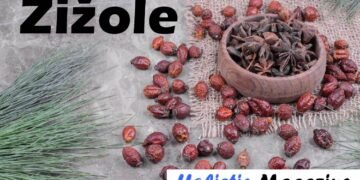Introduction
Pravi celer, meaning “real celery” in Croatian, emphasizes purity, tradition, and unaltered botanical lineage. The term combines “pravi,” translating to “true” or “authentic,” and “celer,” meaning celery. Unlike hybrid celery cultivated for shelf life or appearance, pravi celer denotes original strains that retain stronger aroma, more potent oils, and fuller nutrient density. Traditionalists favor it for its medicinal legacy and robust flavor. It’s distinct from wild celery, which is harsher and smaller, and commercial celery, which often lacks depth. This focus on authenticity shapes its continued use in both folk medicine and natural culinary applications.
Botanical Identity
Scientifically known as Apium graveolens, pravi celer belongs to the Apiaceae family—also called the parsley family. It shares lineage with plants like parsley, fennel, and coriander. Three main types exist: stalk celery (grown for its crisp ribs), leaf celery (for intense herbal flavor), and celeriac (for its bulbous root). Pravi celer leans toward the leaf celery variety, rich in essential oils and adaptable to diverse uses, from herbal teas to cooked dishes. This plant thrives in moist, temperate environments and is biennial, although often harvested in its first year.
History and Cultural Significance
Ancient Uses and Symbolism
Historically, pravi celer played significant roles in ancient civilizations. Egyptians used it in embalming rituals, Greeks crowned victors with celery garlands, and Romans integrated it into tonics. It symbolized strength, vitality, and occasionally mourning—especially in Greek funeral rites. Such symbolic weight established celery as more than food; it was a sacred botanical ally. Over time, its status shifted from ceremonial herb to functional food, always retaining its aura of wellness and balance.
Spread Across Civilizations
Originating in the Mediterranean basin, it spread through trade and monastic cultivation. Medieval European monasteries often featured it in apothecary gardens, where monks used it for digestion, arthritis, and calming nerves. Its migration eastward introduced it to Ayurvedic and Traditional Chinese Medicine, where its seeds became prized for their diuretic and cooling properties. In the 21st century, wellness culture revived interest in celery’s ancient roles.
Nutritional Profile of Pravi Celer
Vitamins and Minerals
It is low in calories but dense in nutrition. One stalk contains only 6–10 calories, making it ideal for weight-conscious diets. It is high in Vitamin K, essential for blood clotting and bone health and also provides Vitamin A for vision, Vitamin C for immunity, potassium for heart function, and folate for cell repair. It contains calcium and magnesium, supporting muscle and nerve function. The high water content supports hydration, while fiber promotes satiety and digestion.
Antioxidants and Plant Compounds
Loaded with antioxidants like apigenin and luteolin, pravi celer helps neutralize free radicals. These compounds exhibit anti-inflammatory and anti-cancer effects. Apigenin, in particular, is linked with calming the nervous system and fighting neurodegeneration. Luteolin supports cognitive clarity. Phthalides, another group of compounds found in celery, may help lower blood pressure and relax artery walls. Together, these elements make it a potent anti-inflammatory agent.
Health Benefits of Pravi Celer
Digestive Health and Hydration
Rich in fiber and water, pravi celer aids digestion and maintains fluid balance. It stimulates bile production, which improves nutrient absorption. Its enzymes help break down fat and protein, easing the digestive load. Hydration support comes from its natural sodium and potassium balance, minimizing bloating and constipation.
Anti-Inflammatory and Heart Health
Phthalides lower LDL cholesterol and improve circulation. Apigenin and other flavonoids reduce systemic inflammation, which can prevent conditions like arthritis, IBS, and autoimmune disorders. By regulating blood pressure and reducing plaque buildup, pravi celer acts as a cardioprotective food.
Bone Strength and Immune Support
High Vitamin K levels strengthen bone mineral density and reduce fracture risk. Vitamin C supports immune defense by stimulating white blood cell activity. Magnesium and calcium further assist in bone maintenance and nervous system regulation. These combined effects make pravi celer ideal for aging populations.
Pravi Celer in Herbal and Traditional Medicine
Ayurvedic and TCM Uses
In Ayurveda, celery seed (ajmoda) is considered a warming digestive. However, its stalks have cooling, pacifying effects on Pitta dosha. In Traditional Chinese Medicine (TCM), pravi celer cools excess heat and aids in liver detoxification. It is used to treat high blood pressure, restlessness, and water retention. The plant’s energetic profile blends with many holistic systems.
European Folk Remedies
In Slavic and Western folk practices, it was steeped in boiling water for detoxifying teas. It was used to soothe nerves, enhance focus, and relieve joint pain. Folk medicine incorporated it into bitters, tinctures, and even poultices. Celery seed was used for urinary tract health and menstrual discomfort.
Culinary Uses of Pravi Celer
Raw, Cooked, and Juiced Forms
It is extremely versatile. It can be eaten raw in salads, chopped into soups, or pressed into juice. Leaves function like parsley—aromatic and herbal. Its crunchy texture pairs well with dips, spreads, and vinaigrettes. Celery juice has become a morning ritual for detox enthusiasts.
Recipes and Pairings
Celeriac and it blend well in creamy celery root soup. Apple-celery juice offers a balanced, refreshing detox drink. Celery leaf pesto adds zing to pasta. Infused honeys with celery leaves and ginger support immunity and soothe coughs. it’s mild flavor makes it suitable in savory or herbal-sweet recipes.
How to Grow and Harvest Pravi Celer
Growing Conditions and Seedling Tips
It thrives in moist, rich soil with ample sun. It grows best in cool temperatures, making it perfect for early spring or late summer sowing. Seeds germinate slowly, so indoor starting is advisable. Transplant seedlings after frost ends. Regular watering and organic mulch support healthy growth.
Harvesting and Preserving Pravi Celer
Harvest celery by cutting outer stalks or lifting the whole plant. Wrap fresh stalks in foil to retain moisture and refrigerate. For preservation, leaves can be dried, stalks frozen, and seeds collected for spice. it maintains its flavor longer than hybrid types, especially when stored properly.
Pravi Celer in Modern Wellness Trends
Celery Juice and Detox Culture Pravi Celer
Celery juice has surged in popularity due to social media influencers and alternative health voices. Advocates claim it purifies the liver, calms inflammation, and boosts skin health. While scientific backing is ongoing, anecdotal support drives its use. Juicing it provides more nutrients per volume than conventional celery.
Supplements and Extracts Pravi Celer
Celery seed capsules are sold for their blood pressure-regulating effects. Tinctures and tea blends include celery for detox and stress relief. These products, derived from pravi celer, retain more of the original plant’s medicinal essence. Always consult a healthcare provider before using concentrated forms.
Environmental and Sustainability Considerations
Farming Impact and Water Usage
Celery cultivation demands significant water, making sustainability crucial. Pravi celer grows well with organic practices and compost-enriched soils. Rotating crops and choosing heirloom seeds reduce environmental strain. Urban farms and permaculture setups have begun including it as a sustainable crop.
Supporting Local, Eco-Grown Celer Pravi Celer
Growing it at home cuts transport emissions and supports biodiversity. Local markets sometimes offer heirloom celery varieties. Choose pesticide-free, open-pollinated seeds. Supporting small-scale agriculture ensures access to nutrient-rich and authentic celery.
The Future of Pravi Celer in Health and Cuisine
Integration into Functional Nutrition
Holistic nutritionists are reintroducing pravi celer into anti-inflammatory and gut-healing diets. As people seek natural solutions, this ancient plant finds new relevance in meal plans targeting longevity, mental clarity, and hormone balance. Its adaptability makes it a kitchen staple for the conscious eater.
Innovation in Food and Supplements
Emerging products include celery-infused broths, protein bars with celery extract, and fermented celery kombucha. Food tech brands are experimenting with celery-based seasonings and flavor enhancers. The rise of plant-centric nutrition ensures it will stay central to innovation.
Conclusion
Pravi celer is not just a vegetable—it’s a functional food, a healing agent, and a sustainable crop. From ancient rituals to modern nutrition, it offers unmatched versatility. It supports digestion, heart health, and mental calm. Whether juiced, cooked, or grown in your garden, it brings vitality into your daily life.
FAQs About Pravi Celer
1. What is pravi celer?
It’s a traditional, nutrient-rich form of celery known for healing and culinary uses.
2. Is it different from regular celery?
Yes, it’s more aromatic, nutrient-dense, and used in traditional remedies.
3. How do I grow pravi celer?
Plant in cool, moist soil. Start indoors. Harvest stalks or whole plant.
4. Can I drink it juice daily?
Yes, in moderation. It supports hydration, digestion, and inflammation reduction.
5. Where can I buy pravi celer seeds?
Look for heirloom seed vendors, farmer’s markets, or organic gardening shops.
More Article Links :
Calmered: Red Light Therapy for Mindful Wellness


















Discussion about this post